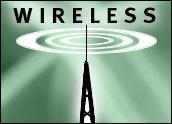
A cruel fact of life is that mobile operators have a vested interest in building out theirnetworks in areas where there are customers, not where there aren’t any. Those towersare expensive, and they want a return.
Unfortunately, that means those of us who enjoy puttering around the vast openspaces that make up most of the United States can’t get a signal.
Alternative technologies exist — including portable satellite phones and a fixed networkextender device called a “Femtocell.”
A Femtocell functions by creating a mini-mobile network and then squirting the trafficover a wired broadband connection.
Portable satellite systems are expensive — often costing more than a dollar a minute forvoice. The Femtocells require a fixed location, like your home.
What if you’re traveling through remote areas, and want to economically make calls andbrowse the Web?
The answer is to take advantage of Federal Communications Commission rulesthat, under certain circumstances, allow you to amplify your phone’s power to 3 wattsfrom its designed power level of usually 0.6W.
Step 1: Choose an Amplifier
Select a 3-watt cellular amplifier that meets FCC requirements and will functionwithin the frequencies your network uses. This will be indicated in the marketingcollateral and not necessarily on the device itself.
The amplifier must be able to cope with potential cell site overloading. It does this byautomatically adjusting amplifier output based on the cell site’s signal — determined bydistance to tower and topography. Full power when not needed blows away other users.
Verify that the amplifier has an oscillation protection circuit. Oscillation is likemicrophone feedback, and if it occurs in amplifiers, it can cause a cell site go offline.
Step 2: Install the Amplifier and Antenna
Connect the phone cradle to the amplifier with the supplied cable. The amplifier kit issupplied with a phone cradle that acts as a low-level repeating antenna; it doesn’t needa wired connection to the phone.
Mount the supplied magnetic-mount external antenna to the vehicle’s roof by placing it inthe center of the roof. The metal roof acts as an important ground plane.
Thread the supplied cable through a door opening. Don’t run the cable through a windowbecause it can become damaged, and don’t connect the cigarette lighter power until bothantennas — the cradle and external roof antenna — are connected.
Step 3: Perform a Site Survey
Download a signal strength app like Staircase 3’s OpenSignalMaps for Android andtouch the “i” button within the app. Apple iPhone users dial *3001#12345#* and thenpress “Call” to switch the home screen signal bars to dBm.
Read off the dBm with the 3-watt amplifier switched off. This is the unamplifiedsignal strength, and is the power ratio in decibels of the measured power as referenced to1 milliwatt.
Step 4: Determine the Boostability of Your Signal
A number from the previous step that is closer to zero is better. So, a dBm reading fromthe previous step, of -71 indicates a better signal than a dBm of -81.
A reading of -120 dBm indicates no signal. You cannot amplify a signal that doesn’texist.
A reading of -110 dBm indicates a marginal signal — virtually nonexistent, but may beamplified.
A reading of -105 dBm indicates no signal on an iPhone.
Tip: Some phones will not show a reading better than the low 50s, even if signalstrength is indeed better.
Move closer to the cell tower if your readings indicate no signal and you know wherethe tower is; you will improve the signal strength. The OpenSignalMaps for Android appprovides tower maps.
Step 5: Perform a Test
Place the phone in the cradle and switch the amplifier on.
Switch the phone’s radio to flight mode and back on again. This forces the phone tolook for a new signal.
Allow the signal to stabilize for a few seconds, and try the call or data connection.
Is It Worth It?
In my Sprint 3G network tests, I was able to obtain a speed increase of 324 kbps usinga 3-watt Wilson Electronics amplifier with 6.12 dBi Wilson Electronics externalantenna (Model 811214: US$159.99 at Amazon.com).
The unamplified signal tested at my chosen remote location, with challengingtopography, was -85 dBm, and at that signal strength I obtained a 148 kbps download,measured using Ookla’s Speedtest.net app.
Amplifying the signal created a -71 dBm signal which gave me a 472 kbps downloadspeed.
At the same location, an unamplified voice call was dropped. I then made the same callwith the amplifier switched on and the call was maintained.
Your results will vary based on topography and distance to tower.
Want to Ask a Tech Question?
Is there a piece of tech you’d like to know how to operate properly? Is there a gadget that’s got you confounded? Please send your tech questions to me, and I’ll try to answer as many as possible in this column.
And use the Talkback feature below to add your comments!





















































